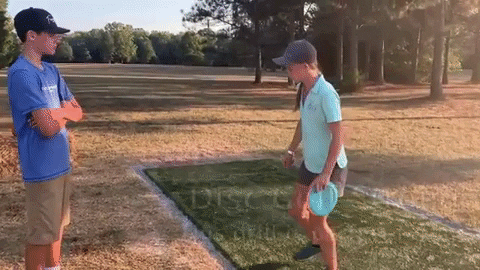Jaani
Bogey Member
- Joined
- Mar 22, 2021
- Messages
- 77
I do understand it's compelling to think and make theories and drills, but I honestly think you are making this waaaaay to complicated.
The back leg is there to make you fall onto front leg. After that you push the front leg down, deep into the ground and let the momentum make the hips turn. This is the best way according to most of the golf scientists. The pressure shifts from back to front before the backswing is even complete.
If you nake the overall pressure of the legs a 100%, the back leg has 100% of pressure before the front leg touches the ground. From there the pressure of the front leg should increase rapidly towards 100%. If you try super hard to PUSH of the back leg at this point, guess what happens? The pressure of the back leg increases. Yes, you can't push of the backleg and make it lighter at the same time. As long as you keep pushing from behind, the pressure stays on the back and never goes to front, aka BACK LEG DISC GOLF.
The only way to increase pressure on the front and decrease on the back is to push down on the front and let the back leg relax.
It is a lot simpler move than you make it sound, really. Just go down on the front leg, throw with the arm and don't fall over. That's it.
The back leg is there to make you fall onto front leg. After that you push the front leg down, deep into the ground and let the momentum make the hips turn. This is the best way according to most of the golf scientists. The pressure shifts from back to front before the backswing is even complete.
If you nake the overall pressure of the legs a 100%, the back leg has 100% of pressure before the front leg touches the ground. From there the pressure of the front leg should increase rapidly towards 100%. If you try super hard to PUSH of the back leg at this point, guess what happens? The pressure of the back leg increases. Yes, you can't push of the backleg and make it lighter at the same time. As long as you keep pushing from behind, the pressure stays on the back and never goes to front, aka BACK LEG DISC GOLF.
The only way to increase pressure on the front and decrease on the back is to push down on the front and let the back leg relax.
It is a lot simpler move than you make it sound, really. Just go down on the front leg, throw with the arm and don't fall over. That's it.
